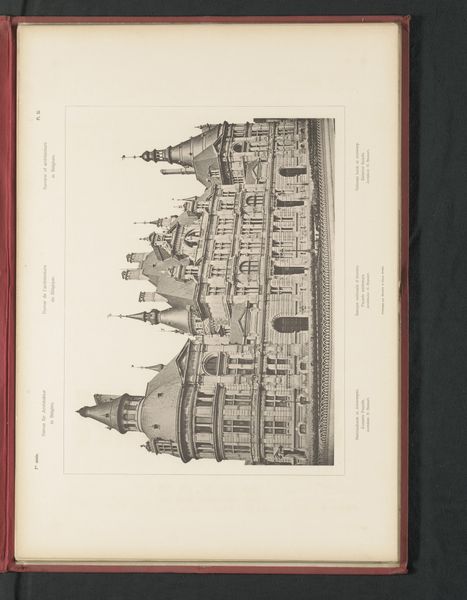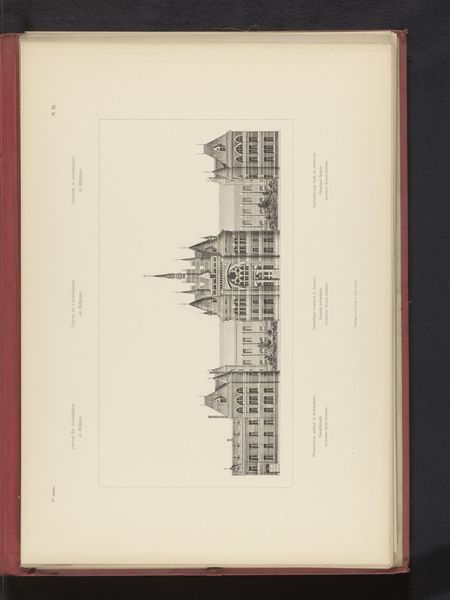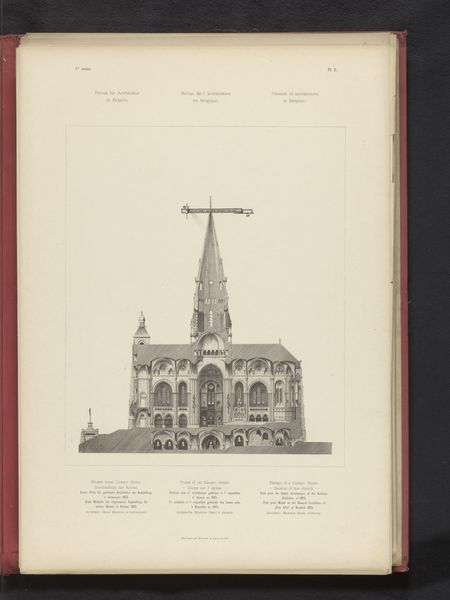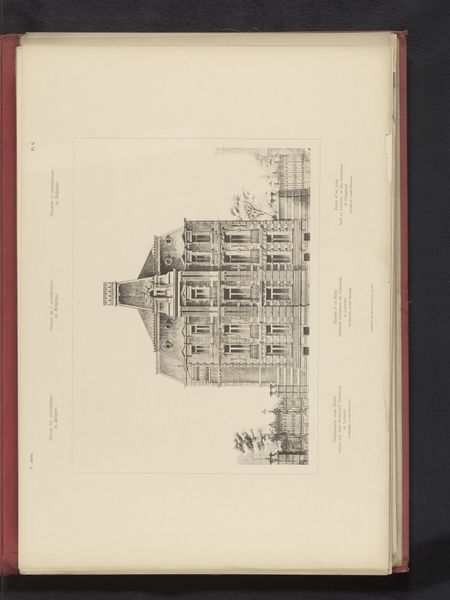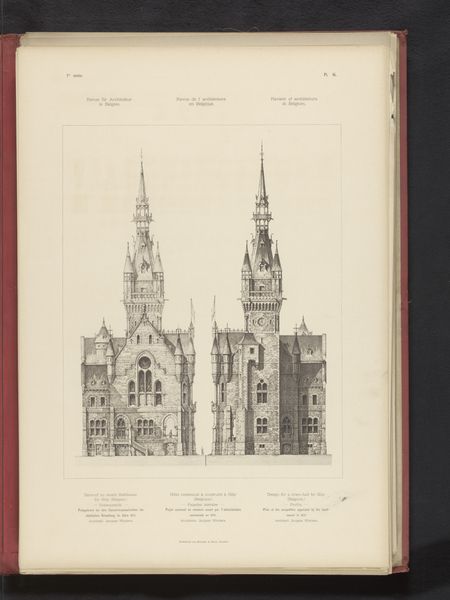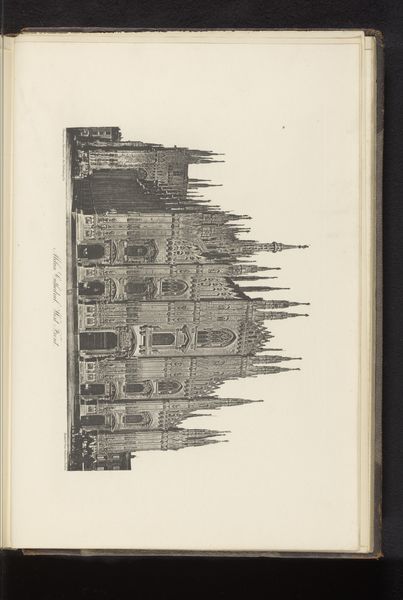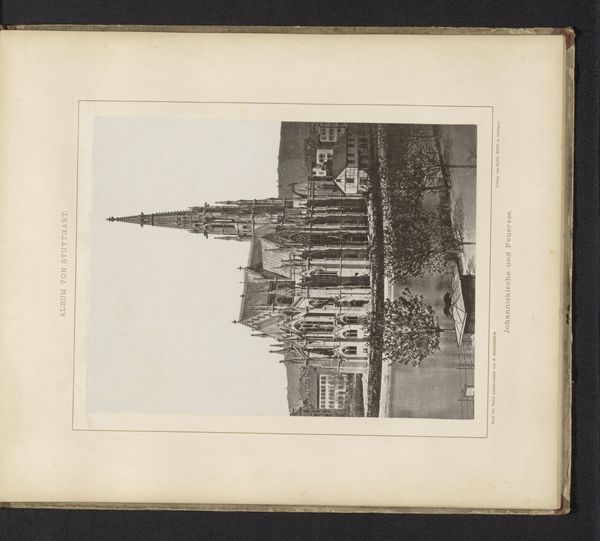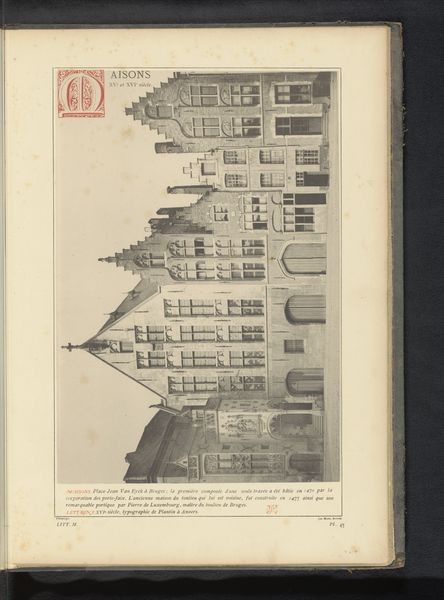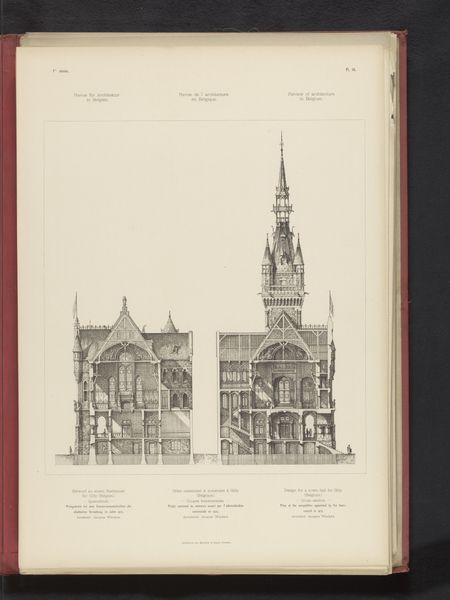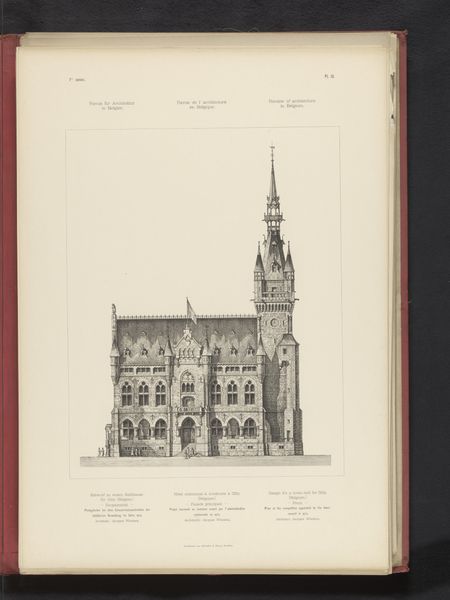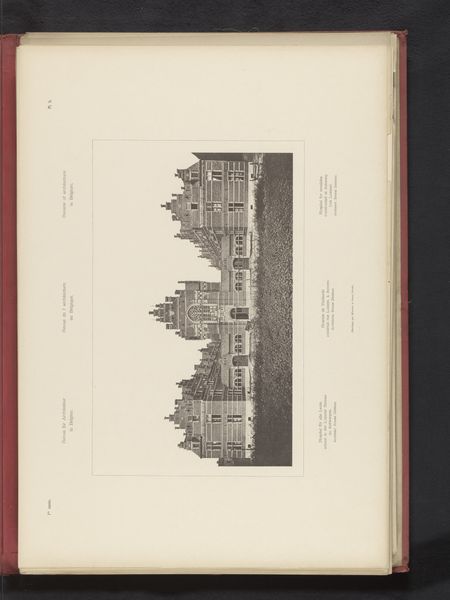
Reproductie van een ontwerp van huizen en warenhuizen aan de Solvynsstraat in Antwerpen, door Jean-Jacques Winders before 1893
0:00
0:00
drawing, print, etching, paper, ink, architecture
#
drawing
# print
#
etching
#
paper
#
ink
#
cityscape
#
architecture
#
realism
Dimensions: height 241 mm, width 309 mm
Copyright: Rijks Museum: Open Domain
Curator: This is a reproduction of a design by Jean-Jacques Winders for houses and warehouses on Solvynsstraat in Antwerp, dating to before 1893. It’s rendered as an etching printed in ink on paper. Editor: It’s a tremendously intricate cityscape, even at this small scale. The density of detail suggests a vibrant commercial thoroughfare, doesn't it? Almost overwhelming. Curator: Indeed. Winders was a significant architect in Belgium. Consider that Solvynsstraat, like many streets, was undergoing modernization. This etching presents his vision, likely aimed at showcasing his ability to blend traditional aesthetics with the burgeoning needs of commerce. These buildings would have signaled progress and prosperity. Editor: Look closely, and one can appreciate Winders' strategic use of line and shadow. He masterfully uses hatching to create volume and suggest varied textures in the brick and stonework. Notice also how the composition directs our gaze, pulling us along the street’s implied perspective. Curator: That perspectival rendering was a key part of attracting potential investors and tenants. Cityscapes like this served a dual purpose. On the one hand, documentation, and on the other, speculative promotion that shapes urban development through artistry. Editor: The architectural detailing speaks to the prevailing styles of the era, particularly the Neo-Renaissance influence so prevalent. The stepped gables, the ornamentation around the windows—it's all designed to project a sense of civic pride and order. Curator: Absolutely. Consider how Winders uses his technical skill here. Architectural drawing gained more visibility at international exhibitions, increasing his chances of securing commissions to construct these spaces. Editor: It's a fascinating intersection of art, commerce, and civic ambition. The medium is beautifully showcased through light, shadow and structure of buildings creating its individual form and style. Curator: Reflecting back, it's impressive how much we can learn about the era's aspirations, seeing his vision for a commercial center brought to life in precise detail and architectural innovation. Editor: Yes, and considering the etching itself as an object and experience that allows us to admire and appreciate how art mirrors society, allowing access and engagement beyond the canvas and the frame.
Comments
No comments
Be the first to comment and join the conversation on the ultimate creative platform.
